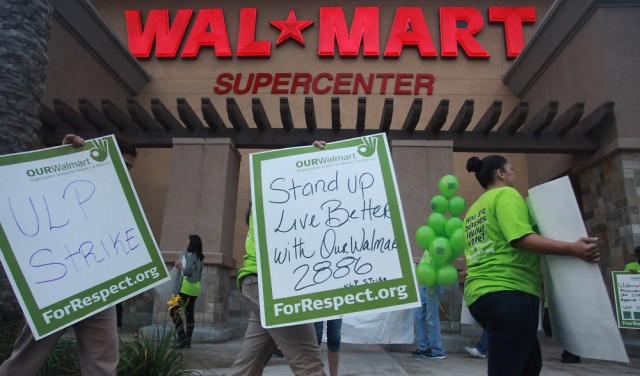
About half a million Wal-Mart employees are getting a much needed pay raise. Starting in April, full- and part-time U.S. employees of the company, the largest private employer in the nation, will earn at least $9 an hour, a full $1.75 more than the federal minimum wage, the company announced this week.
Wal-Mart, which has long been criticized by labor advocates for its low compensation rates, says hourly wages will rise to at least $10 by next year. It's the latest in a series of large retailers who have recently moved to boost wages for their lowest paid employees. Last year Gap, Inc. announced a similar wage bump, joining the ranks of companies like Ikea, Whole Foods and Costco that all pay above the federal minimum.
The company's decision is likely prompted by several factors, including an improving economy, falling unemployment and increased competition for workers, as well as mounting pressure to offer a living wage to its massive army of employees.
"It is the workers who came together and demanded higher wages and better working conditions," Haeyoung Yoon, a labor advocate with the National Employment Law Project, told NPR's Yuki Noguchi.
The announcement aligns with President Obama's ongoing effort to increase the federal minimum wage from $7.25 to $10.10 (despite congressional opposition), and follows on the heels of a growing number of cities and states around the country that have raised their own minimum wages. It also comes after a slew of recent protests by fast food workers and employees in other low wage industries demanding better pay.